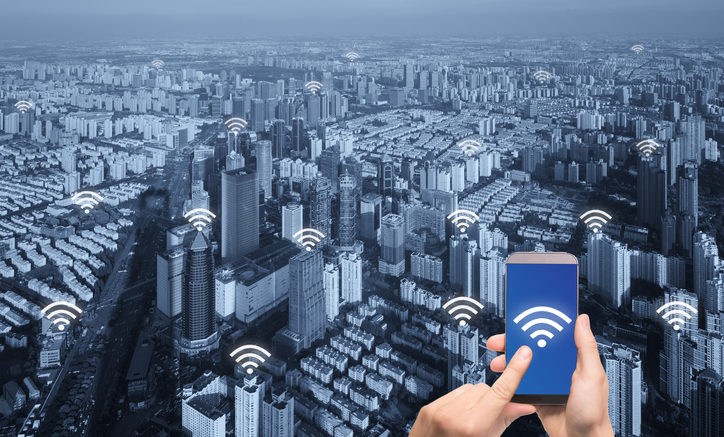Here’s a case where truth really is stranger than fiction.
For decades, we’ve trained ourselves to think that we’ll get better cell service if we stand next to a window. It makes sense, after all we can see better through a window than a wall. But is it really true?
Why cell service is worse indoors
You may have great service indoors and really bad service indoors. The culprit is usually the materials used to make the building you’re in. I have said many times, builders could not have done a better job blocking cell signals if they tried. Here’s an example of some common building materials and why they are so bad for cell signals:
Bricks
Red bricks are red because they have a lot of iron. That iron bounces back cell signals like a mirror.
Stucco
Stucco is a common building material used throughout the south. The stucco itself isn’t really that bad for cell signals. However, stucco needs something to stick to. It’s common practice to put a layer of protective paper, then cover it with wire mesh. The stucco sticks to the wire mesh. Today’s protective paper is usually DuPont’s Tyvek® but older homes used tarpaper. Tarpaper is exactly what it sounds like. It’s paper covered in oily black goo. The black goo is pretty good at blocking cell signals just like it blocks light. It’s not the problem though.
The real problem with stucco is the mesh. Most stucco mesh is incredibly good at blocking cell signals. You wouldn’t think it would be, but the holes in the mesh are smaller than the radio waves that carry cellular signals, so the signals react as if the mesh were solid metal.
Stacked stone
It’s become popular again to use stacked stone. This was a popular finish in the 1950s and it’s been pretty popular the last ten years. Real stacked stone doesn’t have to be bad for reception unless it’s reddish in color. Then it’s just like bricks. The problem is most stacked stone today is actually very thin and mounts to stucco mesh. Yep, the same problem. That darn stucco mesh
Plumbing and wiring
Iron and copper pipes block signals too. Newer homes can use plastic for pipes in some areas but at least up north it’s not common to see plastic on outward-facing walls. As for wiring, it usually isn’t a problem except in older homes that use flex conduit which blocks signals pretty well
Thermal barriers
The last barrier that keeps cell signals out is an insulating thermal barrier. These silver panels make homes more energy efficient but they don’t do any favors for cell signals.
With all of that, how can windows do worse?
Honestly, a window may be the worst culprit when we talk about blocking cell signals. You wouldn’t think it but many energy-efficient windows block more signals than a wall does. They use very small metal flakes to block UV rays as well as heat and this also makes it hard for cell signals to get through, even though cell signals use radio waves that are very different from light.
Enough of this. Let’s get some real world testing.
Here’s what I did. I stood 6 inches from the wall or window in a home and again in a commercial building. I used a Wilson Pro signal meter and tested the signal strength in the LTE band used for AT&T, band 5 of 850MHz. I didn’t test any of the other bands because cell signals are in relatively the same region of the spectrum so what blocks one cell frequency will probably block others. The home had relatively new windows and the building was put up in 2013 and had silver-blue windows.
Typical home:
6″ from wall: -75dBm
6″ from window: -78dBm
Typical commercial building
6″ from wall: -67dBm
6″ from window: -81dBm
While the results for the home aren’t really that different, it’s pretty clear that the commercial building’s windows block cell service much better than the wall does. This means you’re actually hurting your chances of getting a good signal by standing next to the window. Of course you’re still better off standing near the outside of a building as compared to inside the building. But, standing next to the window isn’t going to help as much as you think.
What will help?
If you have signal problems indoors, choose a powerful cellular signal booster system from Solid Signal. We have options for every size building from 1,000 square feet to 100,000 square feet. You can figure out which one is best for you by letting one of our techs help. Call 888-233-7563 or fill out the form below.





